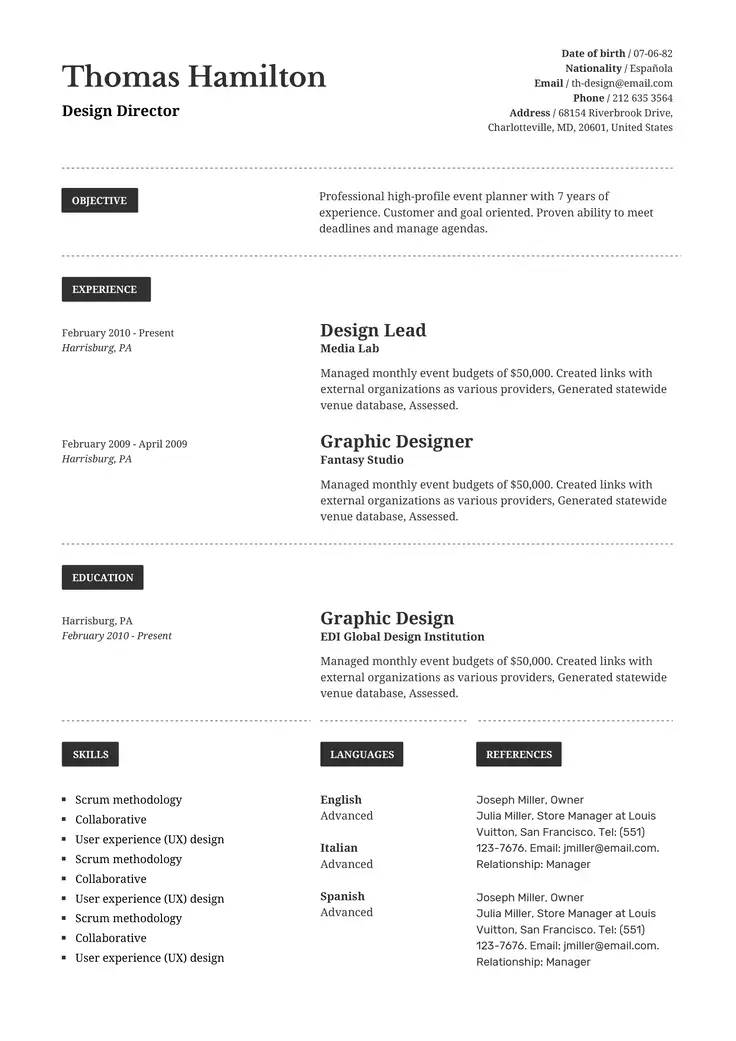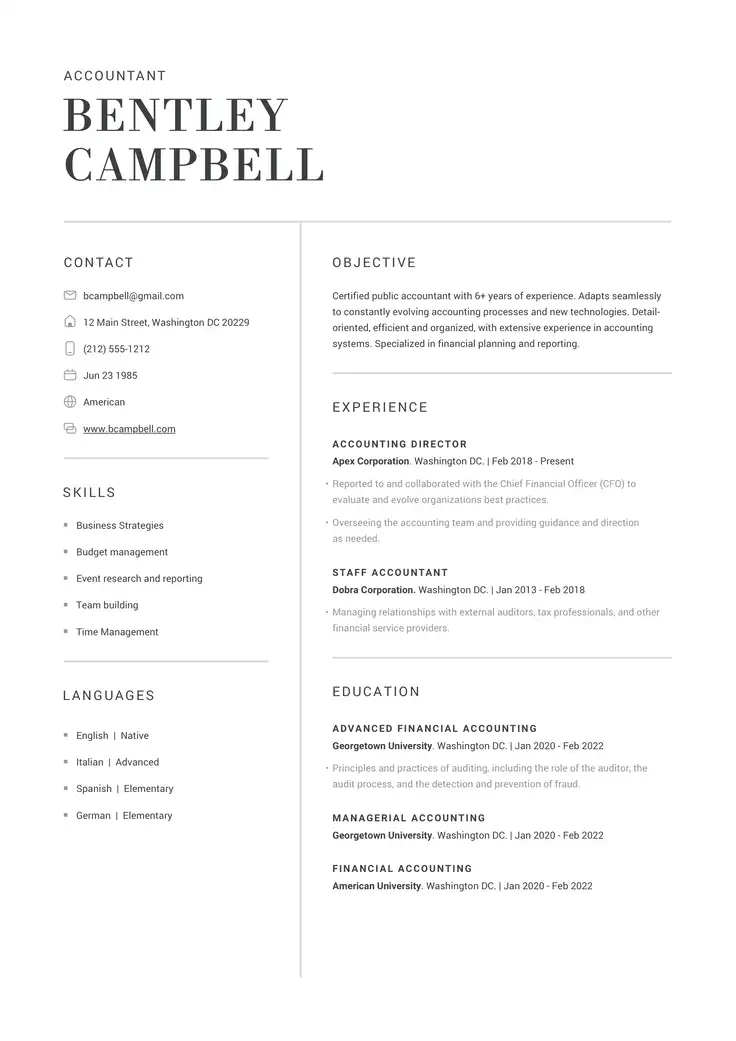Resume Summary Statements
What are they and how to write them?

To write a winning resume for your perfect job, you need an unforgettable summary statement that promotes your candidacy.
The following guide will give you the tips you need to write an outstanding summary statement for your resume by showing you:
- What to include
- What to avoid
- Resume summary statement examples
- Differences between a resume objective and summary
Send your application with confidence by knowing exactly how to create a resume with a standout summary by using the tips below and our AI summary generator that can help you build your resume statement in minutes.
What Is a Summary Statement on a Resume?
A resume summary, also called a summary statement, is a short paragraph, typically 3 to 5 lines long, at the beginning of your resume.
This introduction typically highlights your:
- Relevant skills
- Experience
- Achievements
It gives hiring managers a quick overview of why you’re a good fit for the role and what they can expect from you.
How To Write a Resume Summary Statement
Your summary sits right under your contact info and gives hiring managers a quick snapshot of your fit. Here’s a simple five-step approach to follow to make sure you can write an eye-catching resume statement:
- Lead with your title: State your role clearly, so the hiring manager instantly knows what you do. For example, “Graphic Designer specializing in brand systems for DTC brands”.
- Match the job ad: Lift 3–5 exact keywords from the description and add them naturally into your statement to demonstrate that you are fit for the role.
- Select 2–3 signature strengths: Mention the skills that solve the employer’s top problems, and name the tools you can use to do it.
- Add numerical data: Include years of experience as well as at least one measurable result to prove impact, for example, “cut staff turnover 12%”.
- Write employer-focused, impersonal, and crisp: Avoid “I/me,” use the present tense and active verbs when mentioning yourself, and the past tense when mentioning accomplishments.
Along with our summary generator, take advantage of our AI resume builder to help you write your summary and every other resume section with ease.
Tips for writing a summary statement
Up to 75% of recruiters use an Applicant Tracking System (ATS) to review applicants, according to Select Software Reviews.
Below are tips that can give you a more organized summary and help you impress any software.
- Research the company and competitors to spot language to mirror.
- Keep your summary to one short paragraph, around 35-60 words, with no filler or clichés.
- Use the past tense only for specific results and completed jobs or accomplishments.
- Don’t highlight tasks you don’t want to keep doing.
- Name-drop sparingly and never disclose confidential clients.
Resume Summary Statement Examples
Below, you’ll see a few examples of summary statements for different professional profiles, which demonstrate how you should go about writing your resume summary statement to impress a potential employer and convince them to call you in for an interview.
Sales summary statement example
If you are a professional in sales, you’ll want to highlight your revenue and other key details, like in the following sample:
Results-driven sales professional with over 7 years of experience exceeding revenue goals in B2B and retail sectors. Consistently achieved 120%+ of quarterly sales targets and expanded client portfolios by 35% year-over-year. Skilled in consultative selling, CRM management, and leading cross-functional teams to close high-value deals.
Finance specialist summary statement example
As an applicant for a finance job, you should focus on how you’ve reduced costs and increased profits.
Analytical finance specialist with 9 years of experience optimizing budgets and driving profitability. Improved financial forecasting accuracy by 25%, reduced operational costs by 15%, and supported strategic investment decisions that increased annual revenue by $2M. Adept in data modeling, compliance, and financial planning.
Human resource manager summary statement example
As someone in human resources, you can quickly mention how you improved retention and made recruitment easier.
Dynamic HR Manager with 8 years of experience enhancing workforce efficiency and employee engagement. Implemented performance metrics that boosted retention by 20% and simplified recruitment, reducing hiring time by 30%. Managed a team of 10 HR assistants and organized company-wide events for over 1,000 employees, fostering a positive workplace culture.
Customer service representative summary statement example
If you work as a customer service rep or a related role, such as a front desk receptionist, here is an example of what you can include:
Motivated bilingual customer service representative with 15+ years of experience and exceptional client relations, interpersonal, and communication skills both written and oral in Spanish and English. Proficient with CRM systems and highly organized to ensure constant accurate record keeping. Expert in client retention and growth, having increased customer accounts by 40% in a year.
Entry-level accountant summary statement example
If you are an entry-level applicant, you can still write a summary that shows off your skills and accomplishments, like in the example below:
Motivated and detail-oriented accounting graduate with strong skills in financial reporting, data entry, and reconciliation. Completed a 6-month internship assisting in audits and managing records for budgets exceeding $500K. Proficient in QuickBooks and Excel with a track record of maintaining 100% accuracy in ledger updates and expense tracking.
Resume Objective vs. Summary Statement
While both resume objectives and resume summaries aim to capture an employer’s attention, they serve slightly different purposes.
A resume objective highlights what you want to achieve in your career, while a resume summary focuses on what you’ve already accomplished. The table below outlines the main differences between the two:
| Aspect | Resume objective | Resume summary |
|---|---|---|
| Main focus | Highlights the candidate’s career goals and motivation to grow | Provides an overview of work experience and past accomplishments. |
| Purpose | Explains what the candidate wants | Shows why the candidate is the best fit for the job |
| Tone | Future-oriented | Experience-based |
| Content type | Skills and aspirations | Achievements and results |
| Length | 2-3 concise lines | 3-5 concise lines |
| Employer benefit | Shows motivation to grow | Demonstrates proven success |
While objectives are more skills-based and geared toward entry-level applicants, we still recommend including a summary statement in your resume.
In your resume summary statement, while there is more of a focus on experience, you still should mention skills. If you don’t have much experience, you can still highlight any notable achievements from internships or projects.
FAQs
It’s almost never a bad idea to include an opening resume statement, especially if you can highlight relevant work experience or career achievements. You can opt for a resume objective if you are an entry-level applicant, but even in that case, we still recommend a summary.
It’s ideal for applicants with a clear career path who want to highlight measurable results, such as revenue growth or team leadership.
Remember to place the summary for your resume at the top, right after your contact details, to immediately show hiring managers how your background and accomplishments match the role.
ChatGPT can provide a general sense of how well your resume and summary statement align with a job description, but we do not recommend using it for an exact ATS score, as it’s not designed for that.
For a more precise evaluation, our AI resume checker tool is designed to analyze formatting and content throughout your resume against recruiter standards. This helps to offer a far more accurate and reliable ATS compatibility score.
Yes, most recruiters like to see a well-written resume summary, as they quickly give them an idea of your experience and key skills.
A concise, results-driven summary statement helps hiring managers see your value at a glance and can make your application stand out. However, it’s important to tailor your summary to the specific job and industry to give you a better chance of landing an interview.

